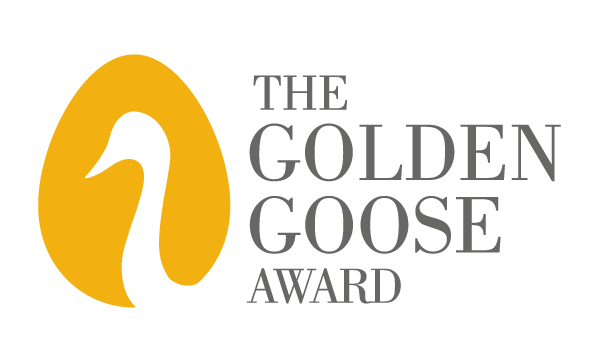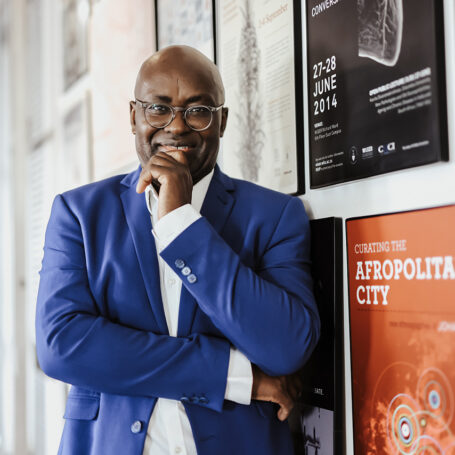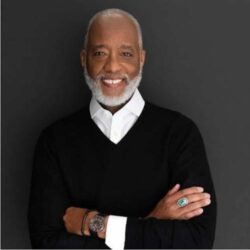Of Geese and Game Theory: Auctions, Airwaves – and Applications

Social scientists and now Golden Goose awardees: Preston McAfee, left, Paul Milgrom and Robert Wilson
What’s the connection between social sciences research on game theory and your ability to make calls from your cellphone anywhere in the country, watch your favorite cable TV show, find a good restaurant anywhere in the world, or live stream the “big game” on your smartphone? Meet Robert Wilson, Paul Milgrom, and Preston McAfee, whose basic theoretical research on game theory and auctions, much of it federally funded, eventually helped the Federal Communications Commission figure out how to allocate the nation’s telecommunications spectrum through sophisticated, enormously complex auctions.
The story begins with Robert Wilson, a Stanford University economics professor who earned his undergraduate degree and his Ph.D. at Harvard University. Wilson has always had a strong interest in game theory, including how it applies to formulating auctions for maximum results. Game theory uses mathematical models to study how people and organizations make decisions. It is highly theoretical but over time has had significant applications. Early in his career, in the 1960s, Wilson’s research was supported by the U.S. Atomic Energy Commission (AEC). The AEC cared little about the specific topic of Wilson’s research – auctions. As he notes today, few people did. What the AEC really cared about was advancing the field of game theory. At the time, this was obscure, curiosity-inspired basic research, supported by the federal government.
Wilson also conducted research in the 1970s for the Office of Naval Research, which wanted to improve the bidding process for contractors to construct naval ships. Eventually, in the 1980s and 1990s, Wilson’s continuing game theory research on auctions and other economic transactions would be supported by the National Science Foundation.
Robert Wilson, Paul Milgrom and Preston McAfee are the second set of Golden Goose winners announced this year. Sponsored by a coalition of academic, business, and scientific groups, with the active encouragement of some members of Congress, the Golden Goose Awards honor scientific researchers whose U.S. government-funded studies might have seemed strange, odd, impractical or wasteful at the time but which paid solid dividends — “major economic or other benefits to society” — in subsequent applications. Recipients are selected by a panel of scientists and researchers.The third annual Golden Goose Awards ceremony takes place in Washington, D.C., on Sept. 18. For more on the the Gooseys and this year’s earlier winner, click here.
As an undergraduate mathematics major at the University of Michigan, Paul Milgrom was inspired by the work of Nobel Prize winner William Vickrey, a pioneer in fundamental auction theory, who conducted his research in this area at Columbia University.
After several years of working as an actuary, Milgrom attended graduate school at Stanford where Robert Wilson served as his faculty adviser. The subject of Milgrom’s Ph.D. dissertation in economics was, no surprise, auction theory. Milgrom went on to conduct further research on auction theory at Northwestern University, where his work addressing the unique, but still highly speculative and theoretical, issues arising from simultaneous auctions of multiple items was supported by the National Science Foundation. A 1982 Milgrom paper on single-item auctions is still considered the state of the art. Ironically, a 1981 paper on multi-item auctions was not accepted for publication until 1999.
In 1993, in part to raise additional revenue, Congress granted the Federal Communications Commission authority to conduct auctions to allocate portions of the “spectrum,” which is the range of electromagnetic radio frequencies used to transmit sound, data, and video across the country. It carries voice between cell phones, programing from broadcasters to your TV, and all types of data wirelessly over the Internet. The FCC’s goal was to create market efficiency to ensure the most effective possible development of consumer markets for communications and media.
Auctions may seem fairly straightforward, but they are far from it. Government auctions in particular need to account both for bidders’ varying needs and for their gaming strategies. And this was an extremely complex undertaking, as some companies would want to create large interstate networks, while some wished to serve smaller regional markets. The process needed to ensure both fairness and efficiency, and ensure competitive markets for consumers. And it would be very difficult to estimate the actual value of what was being sold. It was a simultaneous auction of multiple items (multiple frequency bands in different geographic locations), the kind of auction Milgrom had studied in theory. In this instance, however, the policy and economic stakes were large and not at all theoretical.
The FCC issued a “notice of proposed rulemaking” that suggested a process for the first auction. To ensure efficient allocation, the auction would need to be designed to ensure that bidder behavior revealed the worth and value of individual elements or a “package” of the spectrum. The FCC notice was intended to provide that framework.
It contained considerable information about auctions, including scholarly work. Among the likely bidders was Pacific Bell, the telephone company serving California. When PacBell attorneys saw that Paul Milgrom’s work was cited as a basis for the impending auction, they contacted him to ask for his advice about bidding. When Milgrom saw the FCC’s proposal, he told PacBell that he could design a far better auction that would be both fair and improve efficiency. He went to his old thesis adviser, Robert Wilson, and together they developed an auction process called a simultaneous multiple round, or SMR, auction, also known as a simultaneous ascending-bid auction.
A similar idea was independently proposed by Preston McAfee, at the time an economics professor at the University of Texas and currently chief economist of Microsoft, who was consulting for Pacific Telesis. While McAfee is an American, his early work on auctions, much of it conducted with John McMillan of Stanford and the University of California at San Diego, had been funded by the Canadian government. This work was also highly theoretical, but McAfee was a strong advocate that economic theory should be applied to solving practical problems.
The FCC, knowing that this was uncharted territory, welcomed academic proposals for improving the auction. The FCC asked the three economists to work together, and they designed the first auction. While Wilson and Milgrom contributed the fundamental idea that all of the individual auctions should conclude simultaneously, McAfee’s work was especially important for dealing with other practical issues, such as how to address defaults by bidders and how to ensure participation by women- and minority-owned businesses. (Interestingly, PacBell and Pacific Telesis were in the midst of a corporate “divorce,” so McAfee and the other two economists could communicate with each other only through the FCC.)
Designing and implementing a novel auction method in the given time frame would have been nearly impossible without the foundation laid by the research conducted over the years by Wilson, Milgrom, McAfee and others. That first auction, which occurred in 1994, was a success and SMR auctions have been the method used for dozens of spectrum auctions in the U.S. and around the world, many supported by a company formed by Wilson, Milgrom, McAfee, and McMillan. Indeed, Paul Milgrom is working with the FCC on what will likely be its most complex auction yet – an “incentive” auction, planned for 2015, designed to meet the nation’s changing communications needs and technologies by encouraging the repurposing of spectrum currently controlled by television broadcast networks.
In addition to the FCC auctions, SMR auctions have been used to auction commodities as diverse as gas stations, airport slots, telephone numbers, fishing quotas, emissions permits, and electricity and natural gas contracts.
The FCC has conducted 87 spectrum auctions and has raised over $60 billion for the federal government, while also providing a diverse offering of wireless communication services to the public. These auctions have been called collectively the greatest auction in history.
The economic activity they have made possible, and the changes they have made in the way Americans live, seem incalculable – and not at all theoretical. Game theory has come a very long way indeed.






























































































